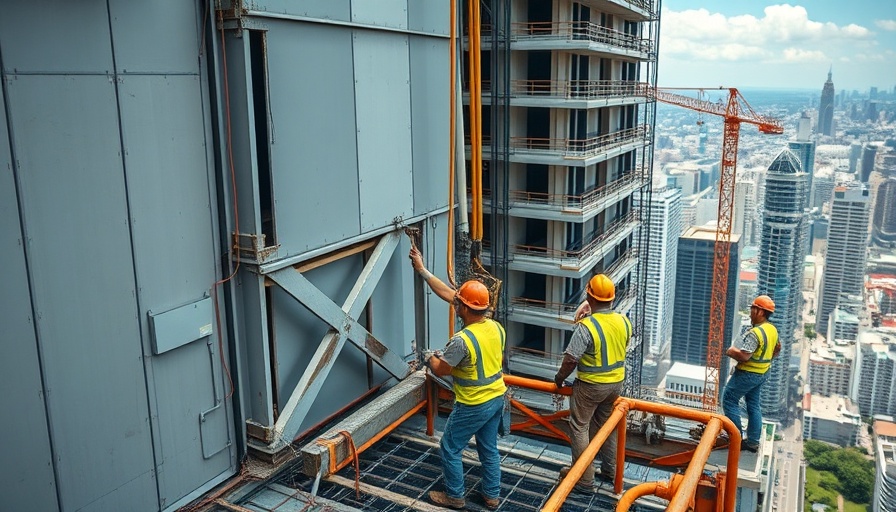
The Sinking Deadline: Are We Falling Behind on Cladding Remediation?
The UK government is staring down a ticking clock, with only a few years left to meet its goal of removing unsafe flammable cladding from buildings over 18 meters tall by the 2029 deadline. As highlighted in a recent report from the House of Commons Public Accounts Committee, this ambitious target may slip through the government's fingers unless swift action is taken to address rising concerns about progress and accountability.
Unpacking the Issues: What’s Stalling Remediation Efforts?
According to the committee, around 7,000 buildings that potentially harbor unsafe cladding remain unidentified. The failure to secure financial contributions from cladding manufacturers adds to the problem, making it difficult for local authorities to tackle remediation essential for public safety. The committee has expressed concerns that the government is showing a lack of seriousness in dealing with these pressing issues, as highlighted by Sir Geoffrey Clifton-Brown MP, chair of the committee. His firm warning emphasizes the dire state of current living conditions for many residents trapped in a housing crisis exacerbated by these unresolved issues.
Financial Strains on Social Housing Providers
Aside from the technical obstacles, the economic implications also present a grim picture. Housing providers are being forced to divert funds from crucial new housing projects to cover cladding remediation costs. This situation underscores the critical balance between maintaining safety standards and meeting the housing demand that continues to rise across the UK. The redirecting of financial resources speaks volumes, indicating that the government's strategy fails to provide effective solutions while continuously placing pressure on social housing entities.
A Frightening Legacy: Lessons from Grenfell
The Grenfell Tower fire, which claimed 72 lives, underscored the dire need for comprehensive reform in building safety standards and regulations surrounding flammable cladding. The tragedy remains a haunting reminder of the consequences of complacency. Unfortunately, the proposed 2029 deadline for the complete remediation of cladding issues is unsettlingly reminiscent of inadequate responses in the aftermath of Grenfell.
Raising the Stakes: Predictions and Responsibilities
The Public Accounts Committee's assertion that the government's plan appears seriously lacking in ambition speaks to the urgent need for a reevaluation of strategies moving forward. Longer timelines could lead to further loss of life if not revised. The committee’s recommendations call for a more robust plan that does not merely meet minimum standards but actively seeks to protect the lives and livelihoods of residents. With cladding still endangering lives across the country, a proactive government stance is vital to prevent a repeat of disaster.
Moving Forward: A Call for Collective Action
As this issue unfolds, everyone from policymakers to construction leaders must work collectively to ensure accountability. The burden shouldn't solely lie on affected residents or social housing providers. Stakeholders must demand clarity and transparency from the government on developing effective strategies. The loud voice of the public can drive home the urgency of effective change.
In conclusion, with an overwhelming number of buildings remaining unidentified and unresolved issues surrounding financial contributions from manufacturers, the chances of meeting the 2029 deadline are bleak. The pathways for resolution must be paved—a call to action that impacts not only the affected leaseholders but everyone invested in ensuring safety in residential buildings going forward.
As we brace ourselves for these looming deadlines, it’s crucial to urge the government to elevate accountability and transparency, ensuring that residents' lives are prioritized and safeguarded against unnecessary risks.
 Add Row
Add Row  Add
Add 




 Add Row
Add Row  Add
Add 

Write A Comment